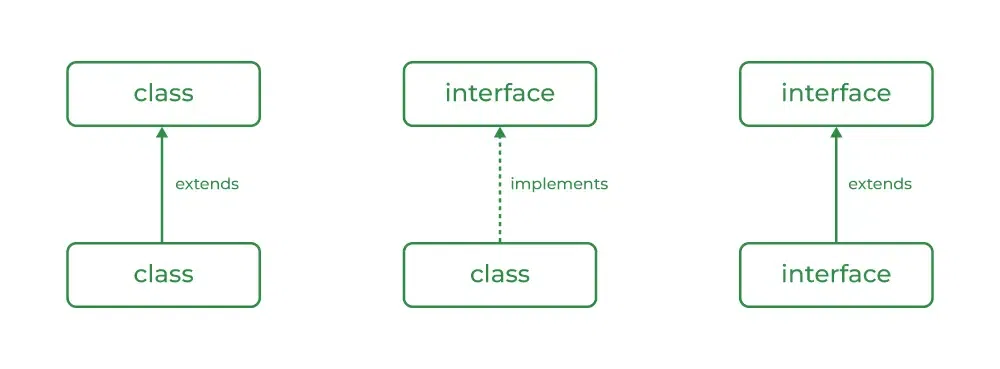Summary
Abstract classes/methods
- “is-a” relationship - Circle is a Shape
- cannont be instantiated
- can have both concrete fields and methods, and abstract methods
- abstract methods are left to the child class to implement
java
abstract class A {
private int a; // concrete field
public void funcA () { ... // comvrete method and implementation
public abstract int funcB(); // abstract method, declared but not implemented
}
class B extends A { // has to implement all the methods declared in the parent
@Override
public abstract int funcB() { ... // implementation of the abstract method
}
Interfaces
- “can-do” relationship - Circle can do get area
- *-able
- nothing concrete, except fields
- methods are public by default, ie. must be overridden with explicitly declared public methods
java
interface C {
void funcC(); // abstract method, is public abstract by default
}
interface D {
double funcD(); // abstract method
}
class E extends A implements C, D { // only can extend one parent class, but can implement multiple interfaces
@Override
public int funcB() { ...
@Override
public void funcC() { ...
@Override
public double funcD() { ...
}
a type can have multiple direct supertypes

Concept
Why?
- grouping subclasses into categories
- denoting that a class has a certain feature
Casting to interfaces
- a class can be cast to any interface, even if it does not implement it
- compiler trusts the programmer and does not give any warnings
java
interface I {
...
}
class A {
...
}
class B implements I {
...
}
I i1 = new B(); // widening type conversion
I i2 = (I) new A(); // allowed despite A </: I
the java compiler prevents the type cast when its provable that it will not work, as in casting between classes
for interfaces, its possible that a subclass implements the interface
java
class AI extends A implements I {
...
}
Impure interfaces
- interface can provide a default implementation of methods
- classes that implement the impure interfaces will use the default implementation, unless they override the method
- compatibility with evolving code
java
interface I {
default void show() { // default implementation, acts as the declaration as well
System.out.println("Default");
}
}
class A implements I { // need not override
}
class B implements I {
@Override
void show() {
System.out.println("Overridden");
}
}
new A().show(); // => "Default"
new B().show(); // => "Overridden"
java 8+
Application
Compile-time type checking
java
public interface Shape {
public double getArea();
}
public interface Printable {
public void print();
}
class Circle implements Shape, Printable { // can implement more than one interface
...
}
Circle c = new Circle(new Point(0,0), 10);
Shape s = c;
Printable p = c;
s.print(); // Fails: Shape doesn't have print()
p.print(); // Works
s.getArea(); // Works
p.getArea(); // Fails: Printable doesn't have getArea()